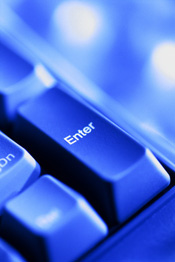A spam report from an IT security firm for August 2012 suggests a rise in fraudulent messages, more diverse English-language spam, and China returning to the top of the ratings for the biggest sources of spam.
According to Kaspersky Lab’s spam report, in August the percentage of spam in email traffic continued to decrease and averaged at 70.2 per cent, a decrease of 1.6 percentage points from July. However, these figures – which are the firm says typical for the summer months – do not mean spam poses any less of a threat. The share of malicious attachments in mail traffic grew considerably in July, when malicious files were found in 4.5 per cent of all mail traffic. In August, there was a slight decline in the amount of malicious attachments, but were still found in 3.9 per cent of all emails. The percentage of fraudulent messages and emails advertising fake designer goods in spam traffic continued to grow.
In August, spammers distributed emails advertising services offered by other cybercriminal businesses, in addition to their own self-promotion. One prominent mailing outlined a scheme to make money by using copied bank cards to steal cash. There were also emails offering address databases to distribute spam to different countries, including those like Iran where spam is seldom seen.
China returned to the top of the ratings for the biggest sources of spam in August 2012. It headed the Top 20 with 31.5 per cent of all distributed spam. China is followed by the USA (15.7 per cent) and India (12.4 per cent). The Chinese contribution to European spam was up 6 percentage points, which lead to a reduction in the other countries’ shares.
August saw major shifts in the topics of European spam traffic. Despite the fact that the personal finance category maintains a high share, it decreased significantly compared to the previous month (minus 21.5 percentage points). In August, English-language spam became more diverse compared to the previous month. In addition to the growing share of ‘pharmaceutical’ messages (plus 9.2 percentage points), spam traffic also contained quite a lot of emails advertising casinos (plus 3.6 percentage points) as well as adult content spam, which accounted for about 1.5 per cent of all spam traffic.
“Summer spam is usually much more highly criminalised, with a growing proportion of emails advertising illegal goods and spreading malicious code. At the same time spammers are actively offering their services and the services of other representatives of the cybercriminal business. Thus, criminal spam activity reaches its peak in August. In this regard, September is expected to be calmer”, says Maria Namestnikova, Senior Spam Analyst at Kaspersky Lab.
The full version of the spam report for August 2012 is available at www.securelist.com.









